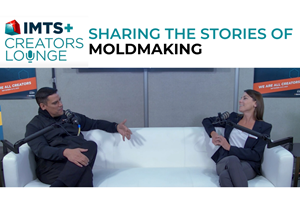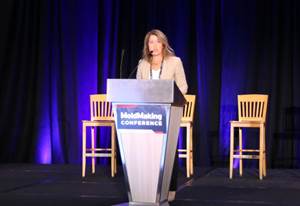Marketing Begins with the Message
If you want to stand out from the crowd and make your marketing work, it is time to craft a new message.
[Fill in the blank] Company, a leading supplier of [fill in the blank], offers the highest quality at affordable prices. Our products are backed by [fill in the blank] years of experience. Count on our expertise, reliability, quality and cutting-edge technology to get your product to market on time and under budget.
Have you heard these words or something similar, before? Does it sound like your message and most of your competitors? The cornerstone of effective sales and marketing is a powerful, clear, concise and distinct statement of what your business does, which differentiates your business from all other competitors. Creating a new message is simple, but crafting a message that truly promotes your company is difficult.
Elements and Structure
Your new corporate message needs to differentiate your products and services while clearly stating what you offer and for what kind of businesses. And you must be able to tell your story in 30 seconds or less. There are four components to the message: (1) what you offer (2) who needs to listen (3) benefits that clients receive and (4) reasons to believe items 1 through 3.
Review the opening paragraph and you will see that there is one reason to believe (experience) and one reference to what product is offered. There is no mention of the target market and absolutely no statement of received benefits. Some will argue that quality, on-time delivery and affordability are benefits, but they are not. Since clients expect to receive good parts, on time, at a fair price, these aren't benefits. They are the bare minimum requirements.
Now, do you see why most marketing messages in the mold-making industry do not work?
To fix your message, make sure that you clearly state what you offer, to whom and how they will benefit. Back this up with one or two facts that support your claim.
As you are building your message, keep in mind that you will want a short form and a long form. The short form is 30 seconds—that is all you have. Any more than 30 seconds and your audience will tune you out. The long form of the message is used once you have introduced yourself, either through marketing or in a face-to-face situation. It expands on each point of the short form to embellish and reinforced the shorter version.
The Web offers a great example of the use of the short and long messages. On the home page, use the short version. You have about five seconds before the visitor clicks out of your site. Once you have them interested, use the long form in your "About" section to provide more detail and more motivation to work with you.
Crafting the Message
If your message conveys that you do everything for everyone, it will be ignored. A poor, weak message attempts to cover all bases so that no opportunity is lost. But in the end, this strategy backfires because you lose business opportunities that were rightfully yours.
A great message is tightly focused on market segments. A powerful message hones in on specific prospects, products and benefits. To illustrate this point consider the following messages from marketing consultants.
- "… offers a complete range of marketing services for companies of all sizes, from start-ups to Fortune 500s. Serving both B-to-B and B-to-C companies, our full service agency covers all of your needs from strategic planning to PR."
- "…offers marketing communications services for small to mid-sized companies with technical products and services. Practicing measurable marketing strategies, our goal is to improve sales performance."
If you are a small mold shop looking to increase your sales, which message would get your attention? Sure, the tight focus of the second message rules out most of the market, but this message is much more likely to catch the attention of the right prospects. It also conveys that the company understands your needs and does not try to use Fortune 500 marketing tactics for your small business.
Marketing is much more effective when it targets a small slice of the total market. It is also much easier to understand the needs and wants of a niché market. Before working on your message, revisit your target market and narrow it as far as you can. The market can be sliced up by many different factors—including industry, size, products, process and even ideal job titles. Using the factors that are best for your business, begin narrowing your target market so that you have the smallest number of candidates that will support your revenue goals.
Once you have your target market, consider what these companies expect and need. Also, determine their challenges, goals, fears and initiatives. Then start digging deep to find the true motivators. Find the benefits that would cause them to pick you over the competition or buy from you even though you have a higher price.
Pareto's Principle: The 80-20 Rule
An effective tool to discover your target market and what your clients want is Pareto's principle, better known as the 80-20 rule. Simply put, the principle states that 80 percent of the results come from 20 percent of the contributors. For the marketing message, we will translate this to 80 percent of gross revenue (sales) comes from 20 percent of the clients. If you have more than a handful of customers, this ratio will prove true.
To determine the target market and its needs, apply Pareto's Principle. Analyze the top 20 percent of your clients to find what works. Next, analyze the bottom 20 percent to discover what bad clients look like and what they demand. Combine the two sets of results and you have the fodder for a great message. As an added bonus, you will quickly learn what your worst clients have in common, and you can craft a message that does not appeal to these traits.
To get a listing of the top 20 percent of your clients, select a period of time that is large enough to overcome cyclical buying patterns. Typically, a one or two year period is used. Using a financial system or database with the sales data, run a report listing the client name and total revenues for the time frame you selected. Sort the report, in descending order, by revenue. Count how many clients are on the list and select the top 20 percent for your analysis.
When you are analyzing the client list, look for any similarities between the clients. But don't stop with the obvious data. Dig deeper to find what really sets them apart from the rest of the market. Look at individual roles and responsibilities. Look for common threats and challenges. Look for logical and emotional needs, and business and personal wants. Seek to understand what really makes them tick and what will motivate them to do business with you.
To get the best understanding of needs and wants, put in some extra effort and contact your top 20 percent. This analysis effort is likely to reveal some surprising results. Now comes the easy part. List all of the characteristics, traits, capabilities and services that your company offers. As you build the list, be on the lookout for the things that make you different and unique.
Build the Story
After completing the analysis, you have all the information that you need to draft a message that will help your sales and marketing efforts. If you did a thorough job, you will have too much information to work with. So, start by paring down your lists to the things that you believe are important or that can distinguish you from the pack. Cut any items from the list that are common in your competitors' messages.
Next, begin matching your corporate strengths to the needs and wants of the ideal clients. For each connection, you now have a benefit statement (what the client wants) and a feature or reason to believe (your capabilities).
Review each of the benefit statements and pick only one or two that are the best. In your marketing message, listing more than two benefits will reduce the impact and impair your results.
Now you have a target market and a few benefit statements. Pair this with a concise statement of what you offer and you have your new marketing message. You have a powerful short form pitch. Use it, without any changes, in every marketing action that you make. Expand on the key points, and add details, to craft the long form of your message.
Related Content
IMTS+ Creators Lounge: Sharing the Stories of Moldmaking
Founder/CEO of Industrial Strength Marketing James Soto welcomed MoldMaking Technology editorial director Christina Fuges into the IMTS+ Creators Lounge to talk about sharing the stories of manufacturing using social media and digital tools.
Read MoreMMT Chats: Mold Builder Shares “Raw and Real” Social Media Strategy
MoldMaking Technology Editorial Director Christina Fuges sits down with Murphy Forsyth, GM – Injection Molding and Director Of Marketing for Zero Tolerance LLC in Clinton Township, MI.
Read MoreEditorial Advisory Board 2023-2026: Camille Sackett, Vice President of Sales and Marketing for Accede Mold & Tool
The 2023-2026 version of MoldMaking Technology's EAB features a new crew of industry professionals. Meet Camille Sackett
Read MoreSodick Partners with Merrifield Machinery Solutions in Eastern Michigan
Merrifield is welcomed under the umbrella of Sodick machine tool distributors, bringing customers more than 15 years of experience in machine tool sales and support.
Read MoreRead Next
How to Find New Customers
What to do when “word of mouth” no longer works to earn new accounts.
Read MoreHow to Use Continuing Education to Remain Competitive in Moldmaking
Continued training helps moldmakers make tooling decisions and properly use the latest cutting tool to efficiently machine high-quality molds.
Read MoreAre You a Moldmaker Considering 3D Printing? Consider the 3D Printing Workshop at NPE2024
Presentations will cover 3D printing for mold tooling, material innovation, product development, bridge production and full-scale, high-volume additive manufacturing.
Read More















